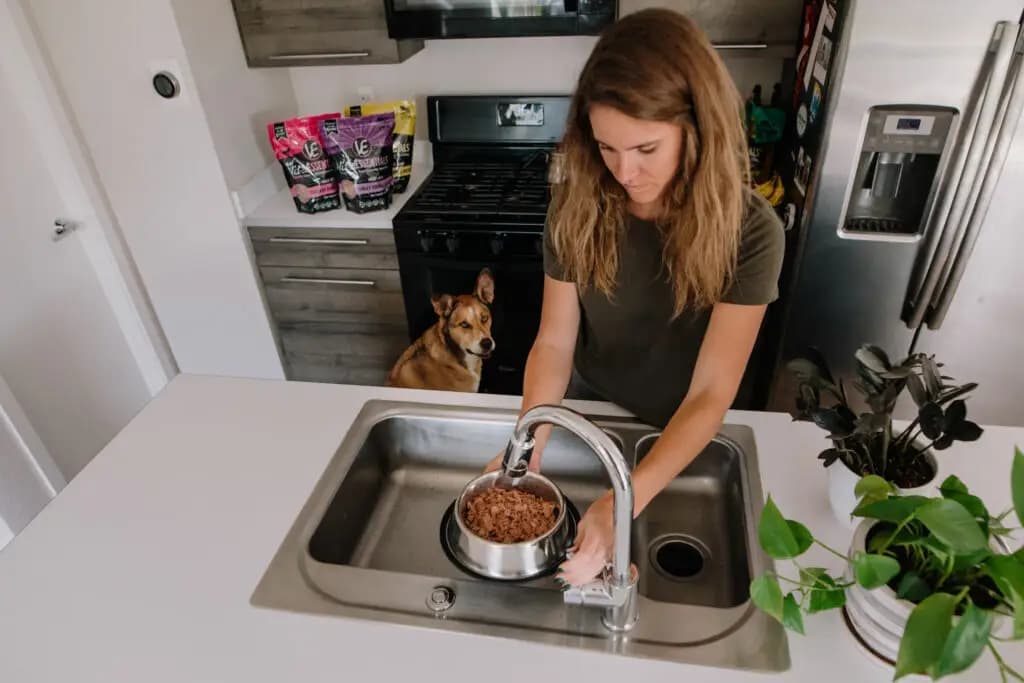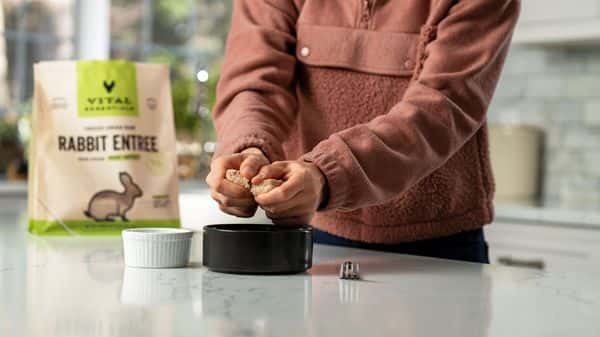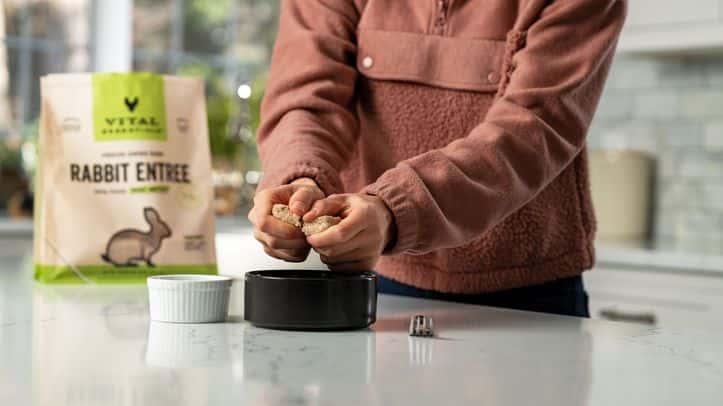
How Often and Why You Should Rotate Your Dog's Protein Sources in Their Diet
3.21.2022
A “rotational diet” is when you regularly change dog food to feed your dog a different protein. For example, you may switch from chicken to beef to turkey and then back to chicken.
There are both advantages and disadvantages to changing what you’re feeding your pup, and what works well for one dog may not work for another. Overall, it’s not a bad idea to give your dog new experiences and new foods to try once a month or every few months.
There are many potential benefits of changing up your dog’s food every once in a while. If your pup gets bored easily, change dog food now and then to keep mealtime different and interesting.
Nutritionally, different proteins contain different vitamin levels. For example: beef is naturally high in Vitamin A, rabbit is naturally high in Vitamin D, and salmon contains high levels of Omega-3 fatty acids. While these foods meet AAFCO guidelines to contain the minimum required amount of vitamins, those extra boosts never hurt.
Finally, one of the biggest reasons to change dog food regularly is to make things easier long-term. You may encounter a situation when you are forced to change dog food, either because of medical reasons or simply because your preferred food is out of stock. If your dog is used to eating different foods, it may adapt fairly easily. On the other hand, if your dog has only ever eaten one food and never tried anything else, they may refuse to eat at a time when you need them to.
There are a few risks you must take when you change dog food, so there may be better options for some situations. If you have a particularly sensitive pet, consider consulting a veterinarian or animal nutritionist to review the benefits or cons of switching their diet.
Also, if you change dog foods too fast or if your dog does have a sensitive stomach, the change may lead to gastrointestinal distress. Take it slow when you introduce any new protein or food into your dog’s diet.
Not every protein or food will be a fit for your pup. There are some cases where you may find out your pet is allergic to a certain protein, but it’s good to know so you can eliminate it from their diet. Nowadays, you can have your veterinarian run an allergy test, too, before even considering switching foods. Whenever you change dog foods, it’s best to only change one facet of the food at a time. For example, you may keep the same brand and choose a different protein. Or, perhaps you feed the same protein but change the form it’s in — wet vs. dry, for instance. Another option is to keep your dog’s main food the same but change the topper you add to the meal.
When choosing a new protein, don’t be afraid to branch out to more unusual proteins your dog may have never tried, such as salmon, duck, or rabbit. Each protein has a slightly different nutritional balance, and you may discover your dog’s new favorite. One of the simplest ways to change dog foods without having multiple open bags is to wait until the bag you are currently using starts running low. Then, purchase the new food and use the last portion of the old food to mix in during the transition.
Take at least a few days to change your pup to the new food, slightly changing the percentage of old food vs. new food each day. Most dogs adjust to the new diet over the course of a week-long transition, but some dogs require two weeks or more if they have sensitive stomachs that react easily to diet changes. The potential for temporary GI upset is why you shouldn’t change dog foods too often; once a month or every few months is plenty.
There is no one-size-fits-all approach to feeding your dog. A rotational diet works great for many dogs, adding variety to their life and preparing them for possible upheavals down the road. But, there may be better choices for other dogs than constantly changing foods if they have a sensitive stomach, allergies, or special health needs.
However you feed your pup, it’s important that you keep an eye on their health and behavior. As long as your dog eats enthusiastically and is their normal happy self, there’s nothing wrong with expanding your pup’s palate!
For more information on Vital Essentials and our full product line, follow us on TikTok and Instagram. And if you have any questions, be sure to check out our FAQ page for answers. Together, we can ensure your pet gets the proper nutrition they deserve.





